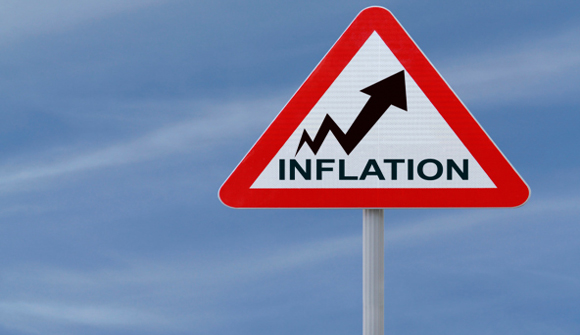
Last week’s headlines were understandably dominated the special counsel’s report which chronicled President Biden’s “diminished faculties and faulty memory”.
So, it’s easy to understand why no one even noticed the Congressional Budget Office’s $20 trillion bombshell announcement that was released within hours of the special counsel report.
Granted, an investigation concluding that the President’s memory is “poor”, “hazy”, and “significantly limited” is a big deal… though most people probably weren’t surprised to hear this.
But frankly the Congressional Budget Office’s report is just as important– because it’s providing further evidence that the United States is headed rapidly towards complete fiscal ruin.
Every six months, the Congressional Budget Office releases a rolling 10-year “Budget and Economic Outlook”. And the most recent one from last year stated that the total cumulative deficit in the ten-year period from 2023 to 2033 would reach an astonishing $20 trillion.
This essentially means an average annual deficit of $2 trillion.
Last week the CBO released its updated forecast, this time for the ten-year period from 2024 through 2034. And their outlook has not improved: they’re still projecting a $2 trillion average annual deficit.
Perhaps more alarming is that the CBO sees the deficit problem becoming consistently worse.
“[D]eficits steadily mount,” the CBO explains, “reaching $2.6 trillion in 2034.” Relative to the size of the US economy, they estimate the 2034 deficit to reach 6.1% of GDP. That’s historic.
“Since the Great Depression, deficits have exceeded that level only during and shortly after World War II, the 2007-2009 financial crisis, and the coronavirus pandemic.”
Think about what they’re saying: the CBO projects spending to be so extreme that such levels have only been exceeded three times in modern history… and all three have been during times of national emergency.
Yet the CBO is not projecting any national emergency over the next ten years. Nowhere in their assumptions is the possibility of a war. Or a new financial crisis. Or another pandemic.
Rather, this historically high level of over-spending is simply the ‘new normal’ in the United States.
It’s also worth noting a number of other rosy assumptions in the CBO’s most recent forecast; they project, for example, that the US economy will return to an ‘everything is awesome’ era where interest rates are low, inflation is low, unemployment is low, and GDP growth is solid.
These are pretty optimistic assumptions. And I sincerely hope they’re right.
Because if they’re wrong about anything, i.e. if inflation remains high, or economic growth stalls, or there’s some national emergency, then their $20 trillion forecast will become much, much worse.
We actually already know the $20 trillion estimate will be worse; that’s because Social Security’s key trust funds are projected to run out of money in the early 2030s as well. And bailing out the trust funds will require trillions of dollars more, just as a down payment.
So, it’s not hard to see how, when viewed through a more realistic lens, the 10-year forecast could reach $25 to $30 TRILLION in total deficit spending… which essentially means new debt.
That is an absurd amount of money. Think about it like this: the CBO estimates that the size of the US economy will reach $48 trillion by 2034.
So, if the government ends up having to borrow $25 trillion, that would be equivalent to more than half of the entire US economy.
This would be debilitating for the economy. And that’s most likely why the Federal Reserve would step in to fund these deficits.
When the Treasury Department sells its bonds to private citizens and businesses, they’re essentially borrowing existing money that’s already circulating in the economy.
But when the government borrows from the Federal Reserve to finance its deficits, the Fed creates NEW money, which it then loans to the Treasury Department.
We all experienced this first-hand in 2020-2022 when the Fed created $5 trillion in new money for the government to spend. The end result was inflation that peaked at 9%.
Now the Congressional Budget Office is telling us, quite optimistically, what the government’s borrowing needs will be over the next decade. So how much inflation should we expect if the Fed has to create $20 trillion in money?
No one knows. But it probably won’t be the Fed’s magical 2% target.
Given this obvious inflation risk from the CBO’s baseline scenario, it would also be quite optimistic (and borderline naive) to assume that the US dollar will continue as the world’s dominant reserve currency beyond the next decade.
After all, what country could possibly be expected to continue buying US government bonds, or conducting cross-border trade in US dollars, in this scenario where inflation spikes and deficits soar?
And the dollar losing reserve status would only compound the problem. Without its dominance as the world’s reserve currency, foreign nations would no longer buy much US government debt… meaning that the Fed would have to print even more money to make up the difference.
Look, I’m not telling you this because I think you should be worried. This isn’t about doom and gloom. Quite the contrary– I’m incredibly optimistic about the future and the opportunities ahead.
But any rational, thinking person ought to take these risks seriously.
The federal government itself is telling us that its borrowing needs over the next decade will exceed $20 trillion, and that is under very optimistic assumptions.
To quote an old phrase from World War I, “the situation is serious, but it’s not hopeless.” And there are plenty of hedges– both financially and personally– which can dramatically reduce the impact of these future risks.
From a financial perspective, I’d start with real assets, i.e. the world’s most critical and valuable resources which cannot be conjured out of thin air by central banks and politicians.
Gold is an obvious one, which we will discuss more… because there is pretty clear scope for gold prices to soar past $10,000 or more.
Want more articles like this? Receive Schiff Sovereign letters to your inbox.
